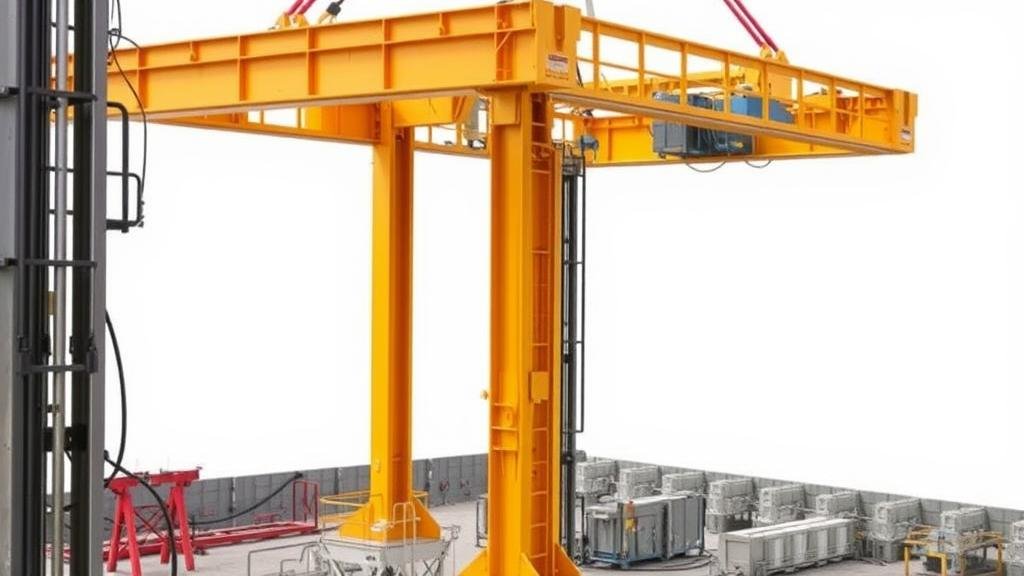Designing Temporary Shaft Headframes for Portable Hoisting Systems
Designing Temporary Shaft Headframes for Portable Hoisting Systems
Temporary shaft headframes are essential components in the mining and construction industries, facilitating the hoisting of materials and personnel in a safe and efficient manner. As projects may require mobility and flexibility, the design of portable hoisting systems becomes increasingly important. This article explores the critical considerations, design principles, and industry practices associated with designing temporary shaft headframes.
Understanding Temporary Shaft Headframes
A headframe, also known as a headgear, is a structure above a mineshaft that supports the pulley systems for lifting and lowering hoisting equipment. Temporary shaft headframes are designed to be disassembled and relocated easily, making them suitable for short-term operations and exploration projects.
Design Considerations
When designing temporary shaft headframes, engineers must account for several key factors to ensure safety, functionality, and compliance with industry regulations. The following considerations are paramount:
- Load Capacity: The headframe must be capable of supporting the weight of the hoisting system, materials, and personnel. For example, a typical portable hoisting system might need to support loads exceeding several tons, depending on the operational requirements.
- Stability and Site Conditions: The design must accommodate the geological conditions at the site. Factors such as soil type, moisture levels, and seismic activity can influence stability and necessitate reinforced designs.
- Material and Fabrication: Selecting lightweight yet strong materials is critical. Common choices include structural steel and aluminum alloys, which offer a good balance of durability and portability.
- Safety Features: Safety is of utmost importance. Designs should incorporate multiple safety features, such as redundancy in the lifting systems, emergency stop mechanisms, and personnel fall protection.
Real-World Applications
Several companies have successfully implemented portable hoisting systems with temporary shaft headframes in various sectors. For example, during the exploration phase at a new mining site, XYZ Mining Company employed portable headframes that could be set up quickly, allowing for rapid assessment of mineral resources without committing to a permanent infrastructure.
Another example can be seen in construction projects where deep foundations are required. ABC Construction used portable headframes to facilitate the sinking of test shafts for pile tests. The temporary headframes were disassembled and relocated as the project progressed, demonstrating flexibility and efficient resource management.
Engineering Challenges
Despite the benefits, designing temporary shaft headframes presents specific engineering challenges, including:
- Transportation Logistics: The portability of the headframe necessitates careful planning for transportation. Engineers must design modular components that can fit within standard transport vehicles.
- Assembly Time: Quick assembly is essential to minimize downtime. Simple yet effective connection systems must be employed to facilitate rapid construction and dismantling.
- Compliance with Regulations: Temporary structures must adhere to local and international safety regulations. This often requires detailed documentation and, at times, inspections.
Conclusion
Designing temporary shaft headframes for portable hoisting systems is a complex yet rewarding endeavor. By understanding the essential design considerations and addressing engineering challenges, professionals can create effective and safe solutions for various applications in mining and construction.
Actionable Takeaways
For engineers and project managers involved in the design of temporary shaft headframes, consider the following actionable steps:
- Conduct thorough site assessments to understand geological conditions and their impact on design.
- Prioritize safety by integrating multiple safety features into the design.
- Invest in training personnel for quick assembly and disassembly procedures.
- Ensure compliance with all relevant regulations to avoid costly delays.
By focusing on these elements, organizations can successfully implement portable hoisting systems that meet both operational and safety standards, ultimately contributing to the success of their projects.


